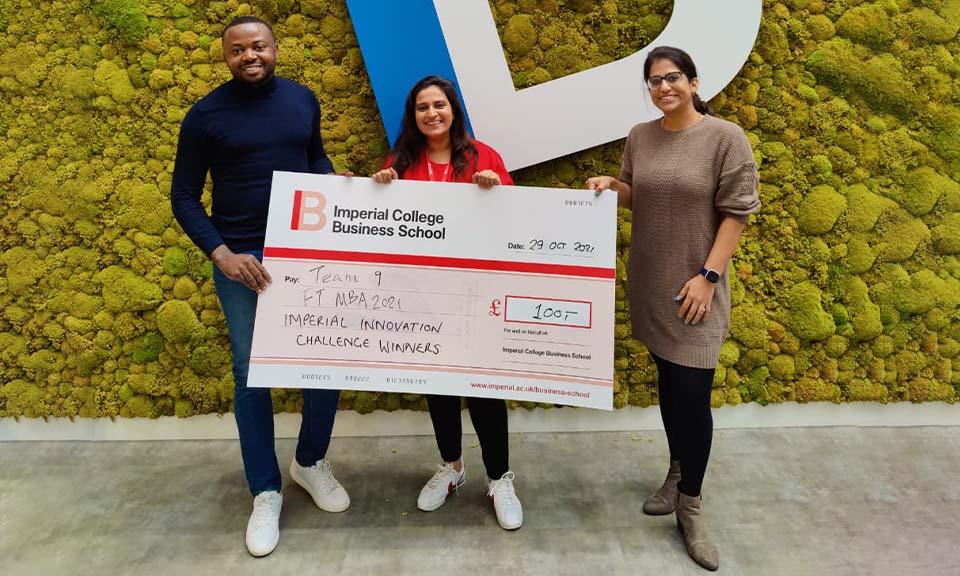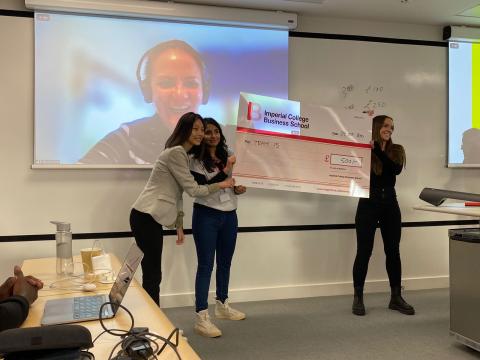
The Imperial Innovation Challenge is an immersive experience on the Full-Time MBA that brings Imperial students together with design students from the Royal College of Art (RCA) for a week of exciting collaboration and out-of-the-box thinking.
This is a unique opportunity where we, as business students, get the chance to interact with exceptional tech companies founded by the brightest minds of Imperial College London, and help add value to their innovations by introducing a business-oriented viewpoint.
The Challenge commenced in October, set against the beautiful and green backdrop of the new Business School campus at White City - Scale Space. This campus building is a modern, functional, collaborative environment, and made a refreshing change from the bustling South Kensington Campus that we MBA students call home.

Each team competing in the Challenge was allocated a new, innovative technology ranging from permeable concrete to smart crutches. These technologies differed from each other in terms of market readiness - some were just shy of market launch while others were just moving into the proof-of-concept stage. The overall goal was to develop a commercialisation hypothesis on innovative, sustainable applications for the developed technology.
The week was very intense and collaborative. Each day began with a series of inspiring lectures on approaching the problem and the technology, with students being encouraged to use new tools and frameworks to think outside the box. The RCA students provided a crucial creative angle to the problems posed, while us MBA students leveraged our practical and business skills to tackle the brief. Throughout the challenge, the teams worked hard with our clients (the tech developers) to design a new problem-solution statement for the innovation.
My team was assigned Permia, a unique solution to urban flooding that is just a few years short of market launch. With a prototype already installed at Scale Space, we were confident in the market applicability of the technology and the key elements that made it unique. However, thinking laterally about additional applications for the technology was challenging. After brainstorming for hours and implementing the feedback from the very encouraging and cooperative tech team, we were able to identify other problems (outside of infrastructure) that Permia's patented design could address sufficiently.
At the end of the week, each team presented their business case to a panel of professors and innovators. All presentations were well received and exceeded expectations of all; the participants, the tech developers and the judges. The top three teams were rewarded generous cash prizes, and I’m beyond ecstatic that my team was one of them!


From this week, my classmates and I learned key frameworks and approaches in innovation and design thinking. Other key crucial takeaways I left with included team building, collaboration and communication skills, that I will no doubt carry with me into my future work.
The greatest part of the week for me was integrating with the STEM strengths of Imperial College and learning from the incredible minds that make up the wider Imperial community.
The Imperial Innovation Challenge provided us with a complex and demanding mini project with an intense focus on innovation and sustainability. This helped us gain insight on how technologies will have to adapt if they are to be commercially viable in our rapidly evolving world.

